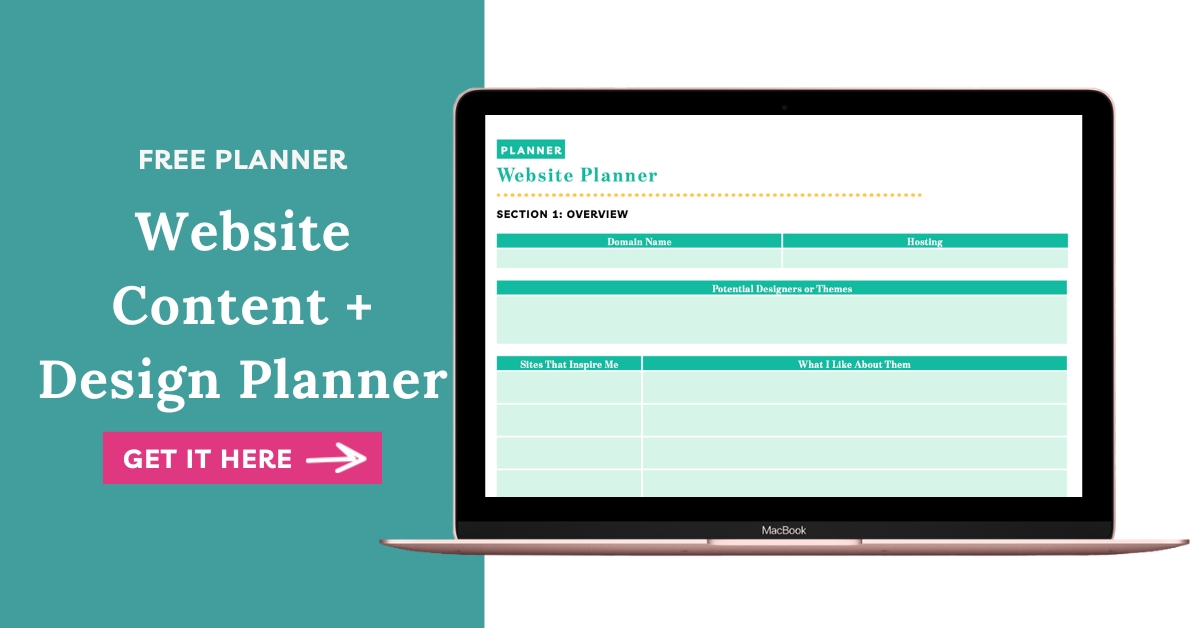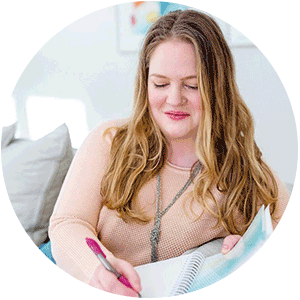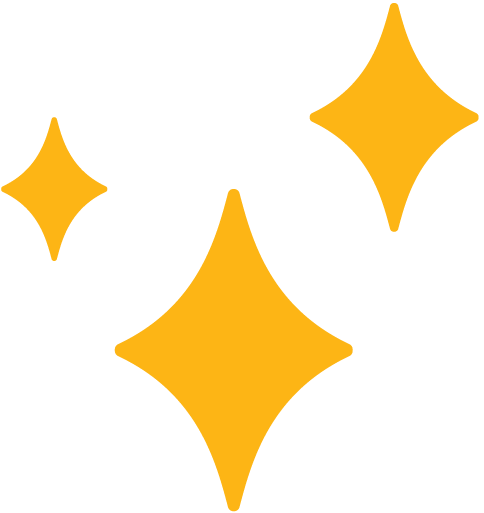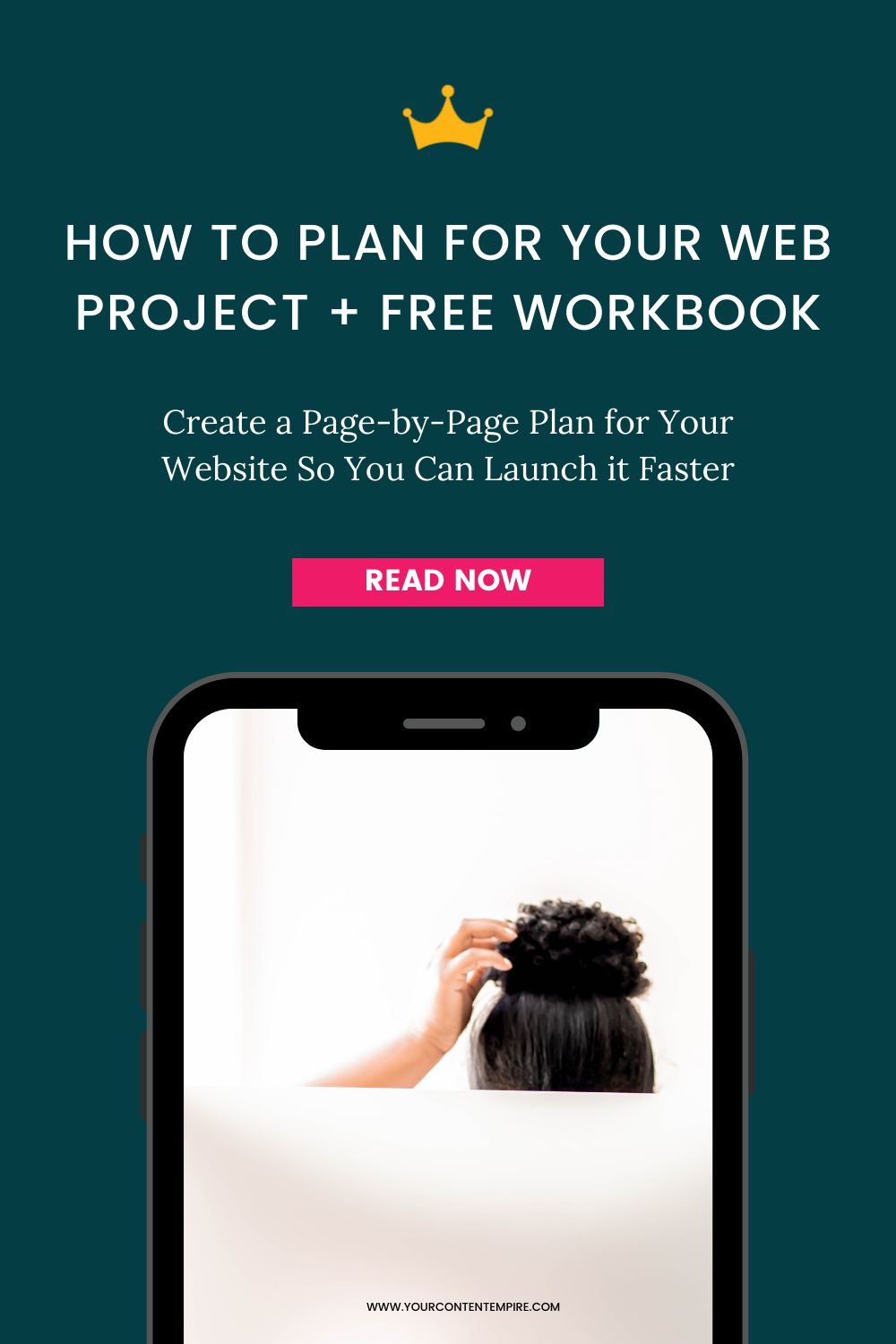
Sign up to get instant access to the Website Content + Design Planner!
Want more profitable + strategic content? Grab my free content planner!


I’m Hailey – content strategist and founder here at Your Content Empire where we help you create more profitable, purposeful and productive content — and hopefully enjoy yourself more while doing it too. Learn more about me here >>

Part of having great content is having a website to put it on. And whether you’re hiring a designer, DIY or getting your second-cousin’s best friend to help you, having a plan for your website before you start will save you a ton of headaches. Plus – you'll know exactly what content you need for where. So here's your complete guide (and free planner) to pull off your website project:
What style you’re envisioning
What your website has to be able to do (it’s functions)
What the goal and purpose of your website
And in most cases, even though someone is technically designing or building your website, you’re responsible for providing the written content and images. And by having these pieces gathered, the whole process will run a lot quicker and smoother. In some cases, designers or developers won’t even touch your website until you have everything gathered. But even if you’re doing the site yourself, the time that you save by having everything pulled together and easily accessible will save you a bucket load of hours.
1. Start pulling together an inspiration board for your brand and website
When you’re first beginning on this step, just create a secret Pinterest board and start pulling in anything you are drawn to without censoring or evaluating it. Then after you’ve gathered 30-50 pins, take some time to fill out the following questions.
Looking for inspiration to pull from? View my inspiration boards that I’ve pulled together with a variety of styles and feelings for clients to brainstorm with: Branding Inspiration and Website Inspiration
2. Answer the following questions
3. Revisit your Pinterest Inspiration Board
With these answers in hand, go back through your Pinterest board and evaluate your pins based on what would appeal to your target customers (but that still excites you)! Delete the pins that don’t fit the bill. Are patterns starting to emerge in the pins that are left? If not, go and pull some more pins that fit what you’re looking for until you have an inspiration board for your website. The aim is to have a selection of brand designs, colours, patterns, website samples, fonts and images.
4. If you have hired a designer/developer to create your website, you’re finished!
If you’re doing it yourself or are just feeling extra inspired, use the pieces on your Inspiration boards to create a palette and inspiration board.
Ever catch yourself thinking "marketing used to be so much easier" or “my marketing stopped working!” You're not imagining it. Between plummeting social media reach, AI-generated content flooding your feed, and a world that seems to serve up a new crisis every...
Tired of staring at a blank screen, wondering what to post? What if I told you I create 260+ pieces of content every year without breaking a sweat? Today, I'm giving away my entire daily writing system – the exact process I use to never run out of ideas and...
Are you stuck at full capacity but afraid to raise your prices? One of my clients just ran a price raising campaign that converted at 35% - with mostly existing leads? Today, I'm giving you my exact step-by-step campaign framework for raising your prices without...